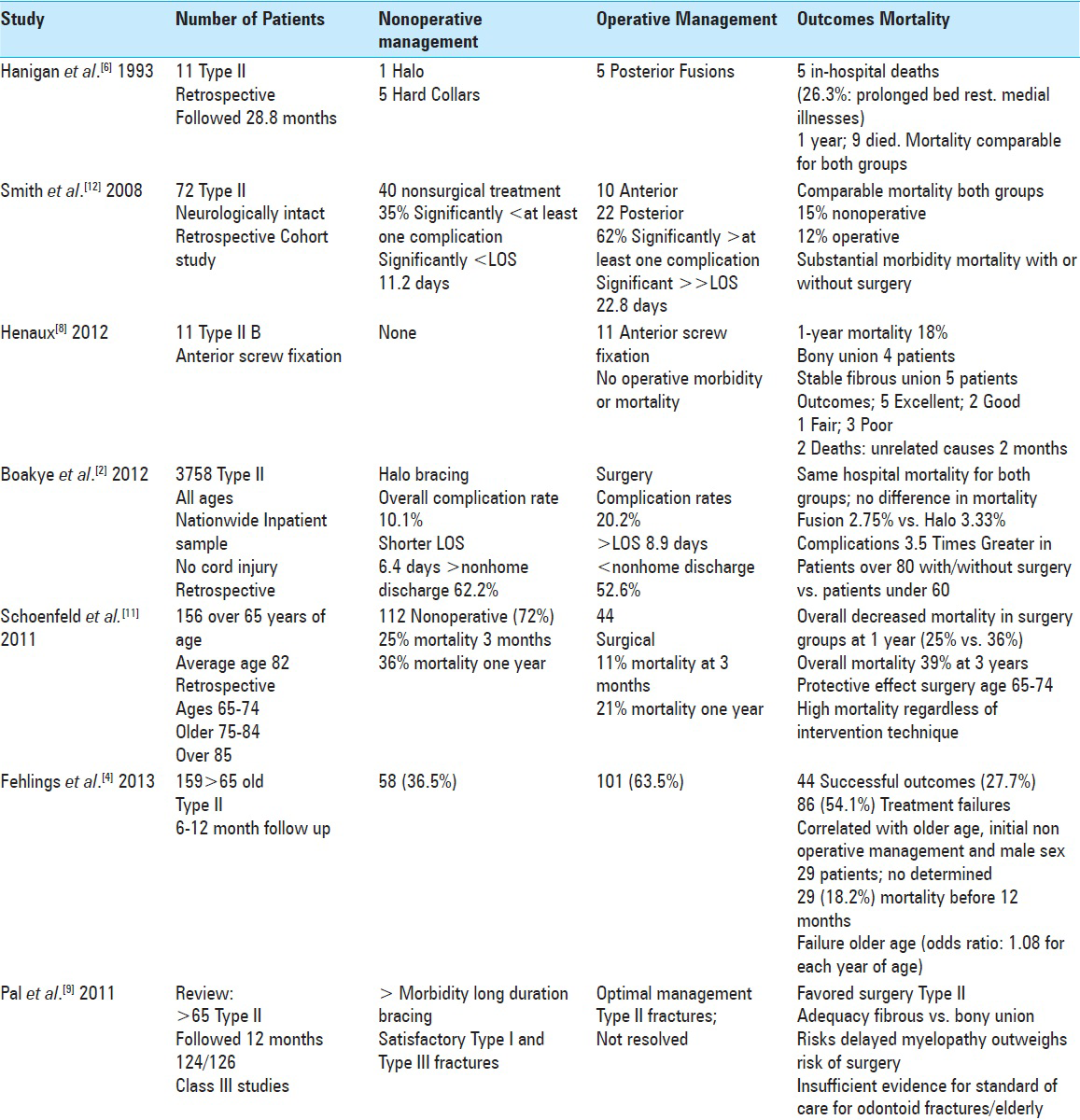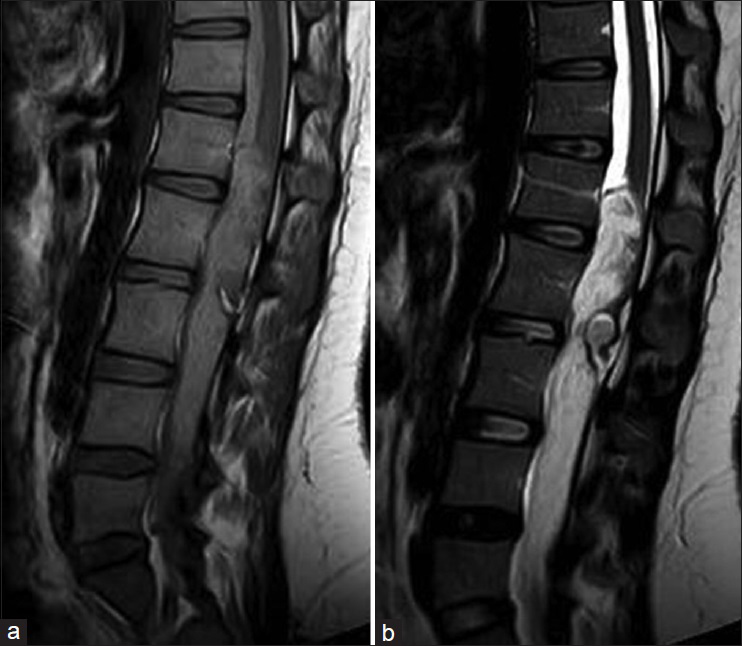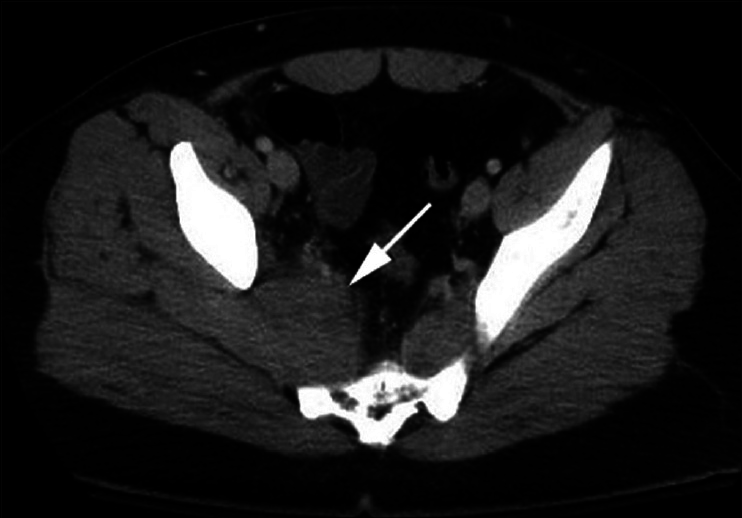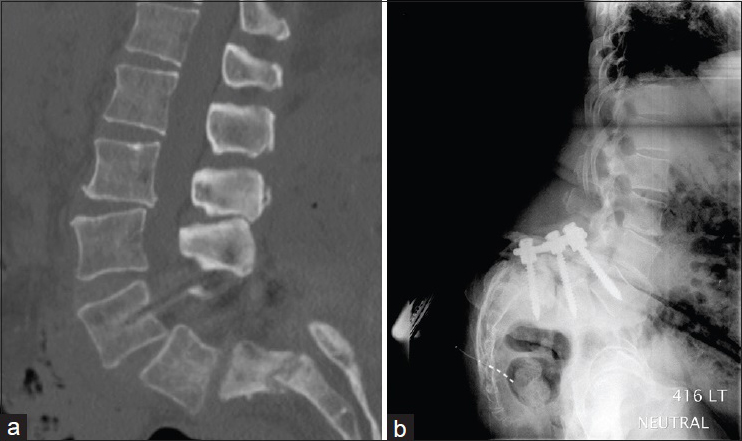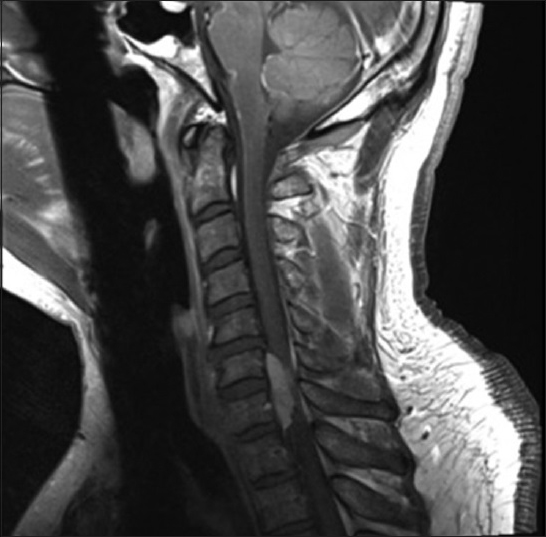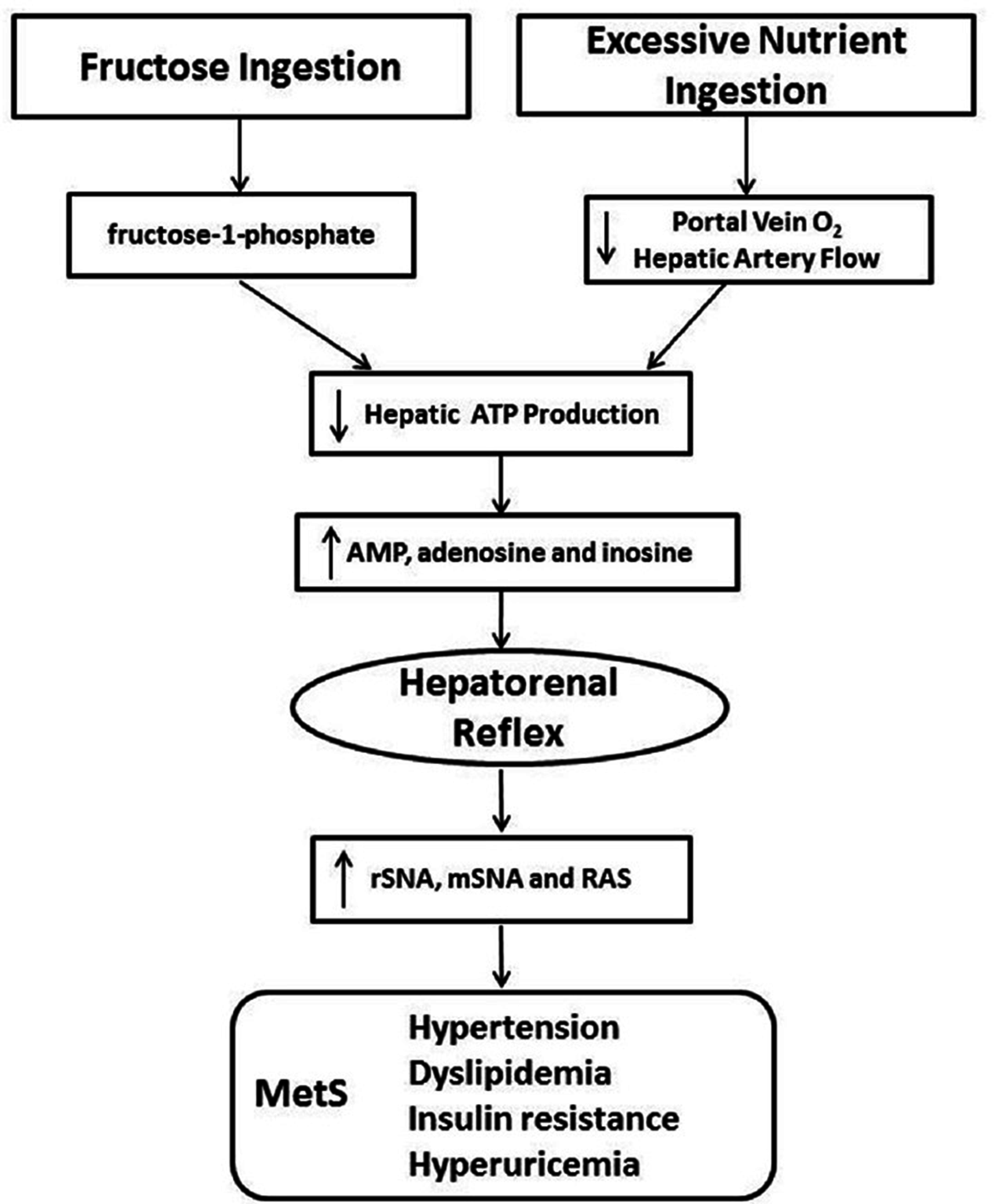Commentary on: Can the anxiety domain of EQ-5D and mental health items from SF-36 help predict outcomes after surgery for lumbar degenerative disorders? By Carreon et al.
Date of publication: 21-Nov-2016
Commentary on the management of type II odontoid process fractures in octogenarians: Article by Graffeo et al. and Editorial by Falavigna (J Neurosurgery Spine August 19, 2016)
Date of publication: 21-Nov-2016
Background:Establishing a clear treatment paradigm for octogenarians with type II odontoid fractures in hampered by a literature replete with level III articles.
Long standing lumbosacral dermoid tumor and intracranial fat droplet dissemination: A case report
Date of publication: 21-Nov-2016
Background:Dermoid tumors are slow growing, benign CNS lesions.
A purely extradural lumbar nerve root cavernoma mimicking acute myeloid leukemia recurrence: Case report and literature review
Date of publication: 21-Nov-2016
Background:Myeloid sarcoma (MS) is a malignant tumor that usually occurs concomitantly with or following acute myeloid leukemia (AML). Cavernomas are benign congenital malformations that are unusual in the spine and exceedingly rare in pure extradural locations.
Spinal epidural abscess in a patient with piriformis pyomyositis
Date of publication: 21-Nov-2016
Background:Spinal epidural abscess resulting from piriformis pyomyositis is extremely rare. Such condition can result in serious morbidity and mortality if not addressed in a timely manner.
A novel technique to repair a transverse sacral fracture in a previously fused lumbosacral spondylolisthesis
Date of publication: 21-Nov-2016
Background:Transverse fractures of the sacrum are rare, and surgical treatment for these fractures ranges from conservative to challenging. Transverse stress fractures of the sacrum after placement of lumbar-to-sacral instrumentation have been previously described. We report a new technique to repair a transverse Type-2 Roy-Camille fracture with spondylolisthesis of S1 over S2 in a previously fused instrumented high-grade L4-L5, L5-S1 spondylolisthesis.
Intradural-extramedullary isolated compressive sarcoid lesion
Date of publication: 21-Nov-2016
Background:Sarcoid involvement of the central nervous system is a rare occurrence, with involvement in approximately 5–10% of all cases. Isolated spinal involvement is an even rarer encounter, only 0.3–1% of all cases. These lesions can form compressive nodules leading to myelopathy. In the presented case of cervical sarcoid, the patient required a decompressive procedure to address cord compression.
Isolated intramedullary Rosai–Dorfman disease
Date of publication: 16-Nov-2016
Metabolic syndrome and the hepatorenal reflex
Date of publication: 15-Nov-2016
Abstract
Insufficient hepatic O2 in animal and human studies has been shown to elicit a hepatorenal reflex in response to increased hepatic adenosine, resulting in the stimulation of renal as well as muscle sympathetic nerve activity and activating the renin angiotensin system. Low hepatic ATP, hyperuricemia, and hepatic lipid accumulation reported in metabolic syndrome (MetS) patients may reflect insufficient hepatic O2 delivery, potentially accounting for the sympathetic overdrive associated with MetS. This theoretical concept is supported by experimental results in animals fed a high fructose diet to induce MetS. Hepatic fructose metabolism rapidly consumes ATP resulting in increased adenosine production and hyperuricemia as well as elevated renin release and sympathetic activity. This review makes the case for the hepatorenal reflex causing sympathetic overdrive and metabolic syndrome in response to exaggerated splanchnic oxygen consumption from excessive eating. This is strongly reinforced by the fact that MetS is cured in a matter of days in a significant percentage of patients by diet, bariatric surgery, or endoluminal sleeve, all of which would decrease splanchnic oxygen demand by limiting nutrient contact with the mucosa and reducing the nutrient load due to loss of appetite or dietary restriction.


